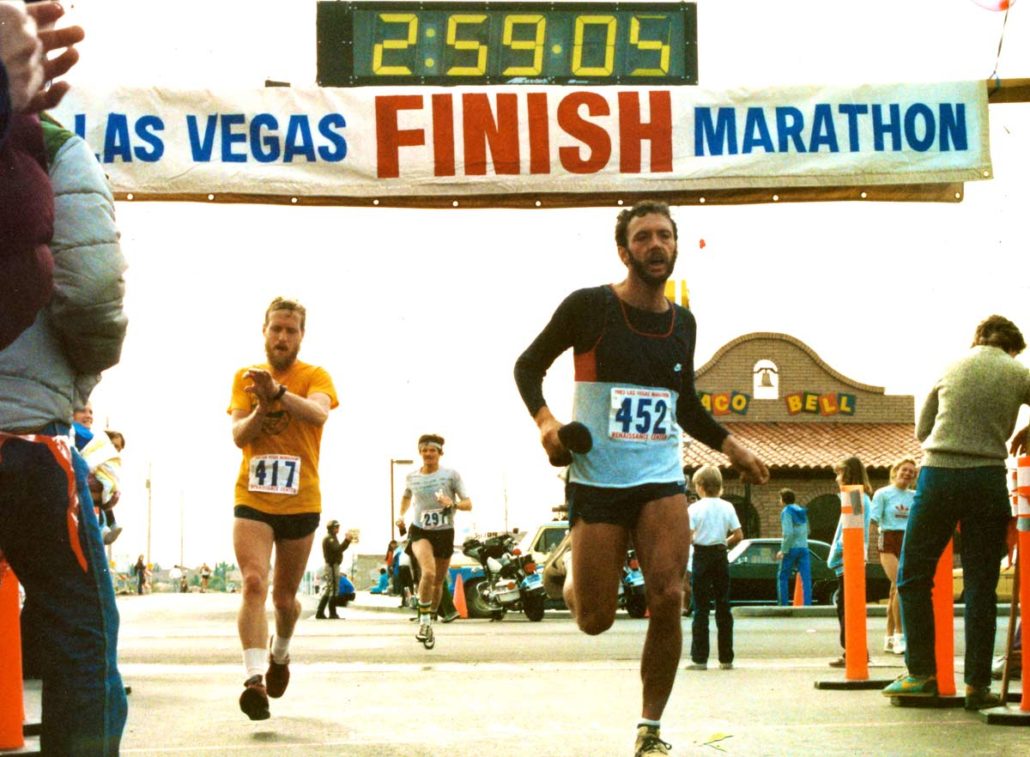Fueling Trends: Carb ratios and my attempt to simplify intake guidelines.

I have a calculator that would figure out the number of carbs a person would need to take to not bonk. It was complicated, fickle, and left me wondering if there wasn’t a better way to figure this out. As far as numbers go, yeah, was definitely overthinking it, but as I figured that out, new trends emerged with new science. So, as one thing ironed itself out, other complications emerged. I am not deterred though, and want to use this post to simplify fueling our as much as I can.
First, let’s discuss the digestion and utilization factors. In a nutshell, the glucose is broken down in the small intestine, then heads to the liver (where it will stabilize blood sugar first), then off to the exercising muscle. Our limiting factor here is the amount that can be digested in the small intestine. For a long time, it was thought that 60 grams of glucose or maltodextrin could be absorbed per hour. Any more than that and you’d create a backup in absorption and this would be why many people would get GI issues during their race.
However, while true, even with what we discuss next, it’s not the entire story. It has been found that if you also add fructose to the mix you can essentially double the absorption rate to 120 grams/hour because fructose utilizes a separate receptor which means the two different forms of carbohydrate are not competing for the same spot. From there my friends, the ultra big carb intake along with the carb ratios in gels was born.
If you happened to read the stories on Kipochoge’s assault on sub 2 hours for the marathon, you’ll know that carb intake was a big part of it. They strategically trained and raced with the now-popular
Maurten products to get him to 120 grams/hour. And if you read any more on the Maurten products it is a 1.0:0.8 glucose to fructose ratio. I know, but I just said 1:1 ratio for 120 grams!? Well, it has been shown that the 1.0:0.8 ratio oxidized faster than the 1:1 ratio.
But, Luke- I am not elite, does this translate to what I should be doing? The short answer is, probably not. At least not entirely. The practical answer is to use what you can tolerate. But even that can be a nonanswer. I have had athletes who don’t practice fueling at all and then on race day try to take 2-3 gels an hour and wonder why they nearly didn’t make it to the Porta John. While that is too much information, it shows that you have to practice this stuff. If you don’t, it’s not going to work on race day. So, assuming you have trained for it, most people- men, women, sub 3 to 5-hour marathons can try to get to 90 grams per hour. That seems to be a nice round number that most people who are focused on performance can settle on as a gold standard. We will do some case studies below that will show what that looks like in a race setting.
So what’s interesting though, is that the ideal ratio, (although “optimal” seems to be what you can “optimally” tolerate) can change quite dramatically based on the length of time you plan on racing for.
For any elites reading this, say 2:30ish or faster, you are best suited with a 2:1 ratio fuel. I looked on our friends at The Feed, and there are plenty of options for these. However, as you drift towards 3 hours and beyond, the ratio falls in line with the 1:1 and 0.8:1 ratios we’ve spent our time on. Since this includes the vast majority of marathoners, you can see why companies like Maurten settle on these ratios.
So, my super simple guidelines for fueling:
Anyone under 2:35 should look at a 2:1 ratio of fuel and aim for 90-100 grams per hour.
2:35-3 hours, somewhere between 2:1 and 0.8:1 will be fine. It will come down to what you can tolerate. The goal would still get as close to 90 grams an hour here.
For those beyond the 3-hour mark, I’d say 60-90 grams per hour should be your goal, with the volume of intake being closer to 90 at 3 hours and 60+ at 4 hours and above.
Let’s break this down using Boston and its nutrition offerings as an example. They are offering Gatorade Endurance (23g per 12 oz @ 2:1 ratio) and Maurten gels (25 grams @ 0.8:1) at miles 11.8, 17, and 21.5 which would be about 1-2 in the second hour and 1 in the third hour, or 1 in hour two, one in hour 3, and one in hour 4.
I couldn’t find any specifics for the Gatorade other than it would be available after two miles into the race, so let’s assume that it’s at about every two miles. However, you won’t be getting 12 ounces of fluid per cup. Honestly, my guess is you’ll get about 3-4 oz per cup, if lucky.
Assuming you stop at every aid station for a cup of gatorade, you’ll get roughly 16 ounces if running at 7:00 min/mile. So, for a lot of people running Boston, you are looking at getting in 12-16 oz of fluid an hour. Taking that and Muarten gels during the race, you’ll find that you’ll get a gel at roughly 1.5 hours in, 2 hours in and then 2.5 hours in. That’s at about 3:00:00 pace, so do the math at 8, 9, or 10 minute pace! The point is, it won’t be enough. You are going to have to supplement. The decision is going to be, what do you supplement with?
With my athletes, I try to discuss what’s the easiest to do. Most of them don’t want to carry fluids with them, and I don’t blame them. So, what we try to do is work out the amount of fuel they will need to take with them if they rely on what the course is offering. For a lot of people, they are looking at Gatorade Endurance and thinking “Ew, no way!” That’s fine, BUT, if I am just going to utilize the water, how am I going to get to 60-90 grams an hour? In that case, I’d say you have two options, one is to use the gels that the course is offering so you can carry less of your own with you. If I did this, I’d suggest using all the same gel. Otherwise, carry with you what you want to take and only rely on the course for water (or electrolyte drink).
Don’t worry, I know what you are thinking next, Dang that’s a lot of gels to take with me. That’s one reason I tend to lean towards working in some part with what the race is offering. Find out early what it is and focus on training your gut in a lot of training runs over a few months. It makes life so much easier. Otherwise, you are looking at 8-12, maybe more gels you need to carry on your person- or have a strategically placed personal cheer zone.
Otherwise, what I would suggest is to use a gel flask and or find shorts with the right amount of pockets. Some people opt for things like flip belts, and that’s fine. You can carry a lot in there. If you are a minimalist, like me, I’d opt for 2-3 gel flasks. Each one carries 5 oz. and can be carried easily and stored without being weighed down. Some people tell me that Maurten’s are tough, but I have athletes who use gel flasks with Muartens and are just fine. If you are using your gel, experiment and see what works on your stomach and for carrying purposes.
My best advice: TRAIN YOUR GUT!
There are really two parts to this. The first is a general nutrition component. If you are training hard but avoiding carbs, and then expect to load up on carbs the few days before and then on race day, that’s a recipe for disaster. Now, the general diet component is for another discussion. However, if you are training your gut on big runs- like long tempos and long runs, you’ll know what works and what doesn’t You’ll also build that tolerance if it’s something you are practicing the entire segment (and really beyond). This was one of the most consistent things that Kevin and Keith Hansons coached us on during marathon segments. Why? We all knew how to train hard, but most of us were novices at taking in fuel and as soon as we had a little sloshy feeling in our stomach we’d quit. It took a while, but you eventually learned where that true limit was and you were much better equipped to handle the volume.
Once you know your fueling plan, set out a plan to train your gut. Just like your run workouts, it takes a good 4-6 weeks of consistency to notice a difference. So be patient. Also, if you take one gel a long run, don’t just jump into three gels an hour! Maybe start with one gel an hour. That alone will probably show you a difference. Then after a few weeks, bump it up to two gels an hour. Keep building on that 4-6 week timeline. As you can see, following that timeline will mean it’s something you have to start months in advance. If you are reading this and your race is in a few weeks, cut your losses and stick to what you know you can tolerate. Make this a focus as soon as you start training again after your race.
Highlights
To close us us out, let’s hit our main guidelines to follow along.
For those running well under three hours:
- Try to get to 90 grams/hour of carbohydrate at a 1:1 to 2:1 (Glucose or maltodextrin: Fructose)
- The ratio isn’t the Holy Grail, but the faster you are, the more you will “run into” the possibility of backing up the receptors that take in the molecules in the small intestine. This will cause GI issues if too much.
For those running in the 3-4 hour range:
- Aim for 60 to 90 grams an hour. The closer to three you are, the closer to 90 grams you should be looking at. A 1:1 ratio intake is good, but again, if you like something like Maarten that’s 0.8:1, that’s completely fine. Just make sure you can handle the volume of carbohydrates.
For those running 4+ hours:
- Would like you to still be at least 60 grams per hour intake. The 0.8:1 ratio intake seems to be the most ideal, but it’s not make or break if you like something that’s 1:1 ratio. The primary focus should be tolerance.
Deciding what to do:
- Look at what your race is offering. Can you combine forces with what they are offering to minimize what you need to carry on you?
- If not, how are you going to supply what you need?
- Hydration vest
- Flip Belt
- Gel flasks
- Well placed crowd support
If you aren’t close to these numbers, or going to go with what race is offering and it’s new to you, TRAIN YOUR GUT! Start with small volumes and add to it every few weeks. You should be as automatic with your fueling as you are your pace!
Last note: I think it is important to note that is is geared towards performance minded athletes. The goal here would be that they aren’t just covering the distance, but covering the distance as fast as they can. I know that I will get push back from people who swear by much smaller amounts. It’s true, I had a teammate that ran 2:19 at the Boston Marathon and didn’t even take a cup of water! He definitely faded back to that 2:19, but still, an impressive feat. The fact is there are always going to be outliers. Some people will say they are a “burner” but the truth is, many don’t know at what point they are actually burning the most fat. I think they’d be surprised at how low of an intensity that switch really takes place. We’ll have to discuss that in another post.
Hope this helps guide you as you plan out your fueling. If you are a performance minded runner and looking for more help than what we offer in our content, please, take a look at the ways we can work together HERE




